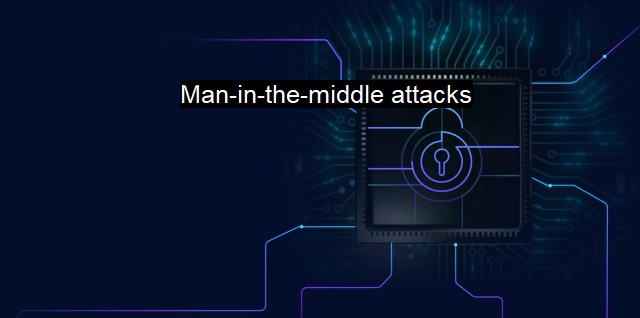What are Man-in-the-middle attacks?
Demystifying Man-In-The-Middle (MITM) Attacks: Types, Methods, and Implications for Cybersecurity
A man-in-the-middle attack, often abbreviated as MITM, is a type of cyber threat where an attacker intercepts and possibly alters communication between two parties without them knowing. To paint a clear image, imagine a modern-day eavesdropper who listens, intercepts, and transmits messages between two parties in a malicious nature. this concept is one that gets considerable attention due to its implications on both public and private sectors.The reason this technique is so prevalent is that it exploits the most vulnerable aspect of a cyber system- its users. Man-in-the-middle attacks, being dynamic and flexible, can be made to look authentically like regular interactions, which makes them skilfully deceptive. As long as online communication remains a critical part of our lives, we may continuously be at risk of these kinds of attacks.
In order to intercept and alter communications, attackers often use different methods. The most common ones include IP spoofing, where an attacker tricks the user into believing that they are communicating with a trusted entity, and DNS spoofing, where the hacker alters the original DNS records to force a connection via the attacker’s device. To accomplish either of these methods, the attacker often uses specially designed software and implements a malware in either the sender’s or receiver's computer.
To understand how this type of cyber attack unfolds, let’s take an example. An attacker positioned as the man in the middle might intercept an email from a bank intended for a customer, and then change the content and forward it to the customer. The customer reads the email, unknowingly acting on false information—like transferring money to a fraudulent account.
Similarly, when it comes to online transactions, the man-in-the-middle attack represents a severe threat to both companies and individuals. Attackers could potentially intercept the communication to gain sensitive data, including the extraction of credit card information, login credentials, and personal information, which can be used for identity theft or other fraudulent activities.
The most significant trait of man-in-the-middle attacks is the complex manner in which they are carried out - they are hard to spot and even more challenging to counter. This is due to the various creative tactics that hackers use to trick their targets, usually done by making them believe that they're following a secure, authentic interaction.
This is where having an antivirus comes in. An antivirus undoubtedly serves as a first line of defence against most cyber threats. Some software has evolved beyond basic virus protection and now includes anti-Malware, anti-spyware, and even capabilities to combat man-in-the-middle attacks.
An antivirus software can recognise and block potential attacks by scanning for malicious activity and unusual data patterns that it's encountered and memorised before. When it recognises these signals, the antivirus software takes action by blocking the attacker's access, removing the malicious data packets or alerting the user.
With MITM attacks continually evolving, the use of advanced security protocols like multi-factor authentication, encrypted connections, use of virtual private networks or VPNs, and regularly updating security software helps to further thwart such cyber threats.
To summarise, man-in-the-middle attacks represent a prominent threat to modern-day cybersecurity landscape. Understanding how they work offers vital insights into developing more effective measures against them. The necessity for robust antivirus software, protective measures, and an improved security culture, trained to suspect and respond to threats, can't be overstated as they collectively work to strengthen safeguards against man-in-the-middle attacks and other evolving cyber threats.

Man-in-the-middle attacks FAQs
What is a man-in-the-middle attack?
A man-in-the-middle attack, also known as MITM, is a type of cyber attack where an attacker intercepts communication between two parties and secretly alters the information transmitted between them. The attacker can then steal sensitive information, inject malicious code, or alter the communication without the knowledge of either party.How can a man-in-the-middle attack be prevented?
Several measures can be taken to prevent man-in-the-middle attacks, such as using secure communication channels, encrypting data in transit and at rest, using two-factor authentication, and regularly updating antivirus and firewall software. Additionally, users should avoid accessing sensitive information over public Wi-Fi networks or unsecured connections.What are some signs that a man-in-the-middle attack has occurred?
Some signs that a man-in-the-middle attack has occurred include sudden changes in network speed or behavior, unexpected pop-ups or error messages, unusual login behavior, unauthorized access to sensitive information, and unfamiliar IP addresses or network traffic.What should I do if I suspect a man-in-the-middle attack has occurred?
If you suspect a man-in-the-middle attack has occurred, you should immediately disconnect from the network, change your passwords, and notify your IT department or security team. You should also run a full antivirus scan and update your security software to ensure that your system is protected from further attacks. It's crucial to act quickly to limit the damage caused by a man-in-the-middle attack.| | A | | | B | | | C | | | D | | | E | | | F | | | G | | | H | | | I | | | J | | | K | | | L | | | M | |
| | N | | | O | | | P | | | Q | | | R | | | S | | | T | | | U | | | V | | | W | | | X | | | Y | | | Z | |
| | 1 | | | 2 | | | 3 | | | 4 | | | 7 | | | 8 | | |||||||